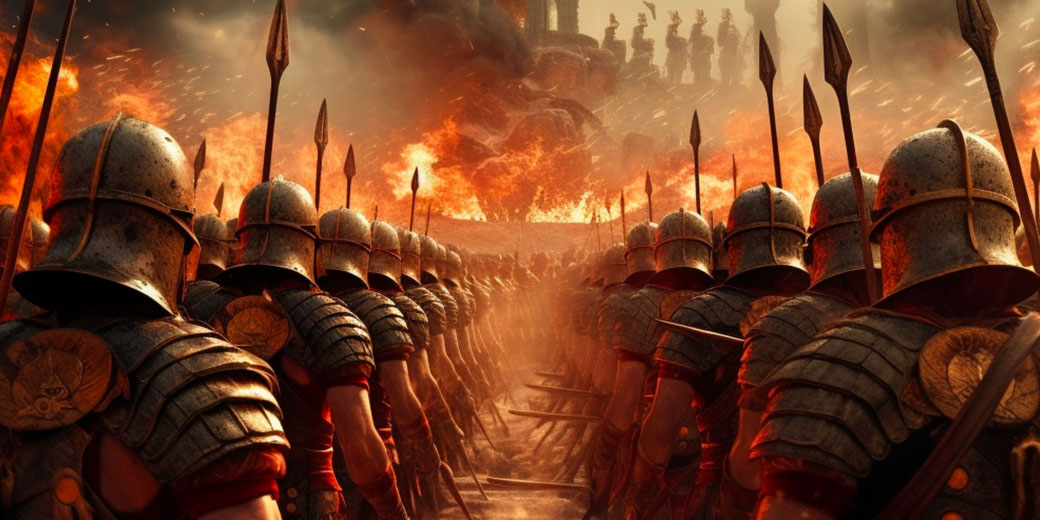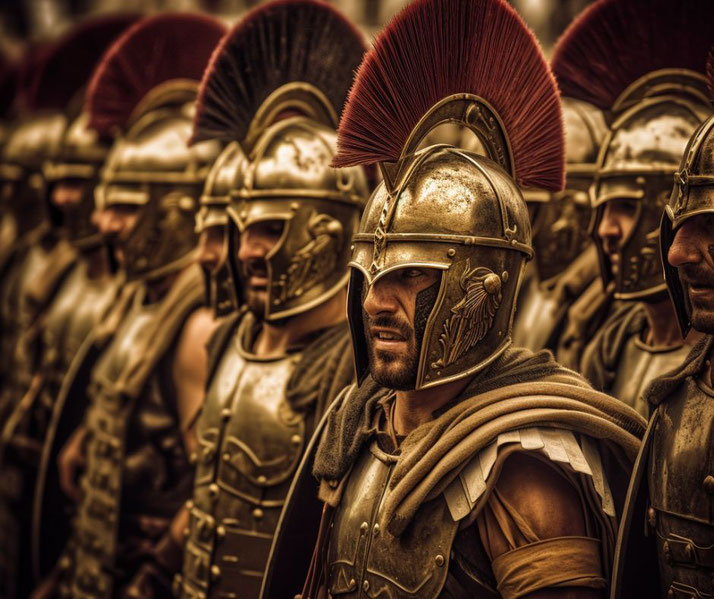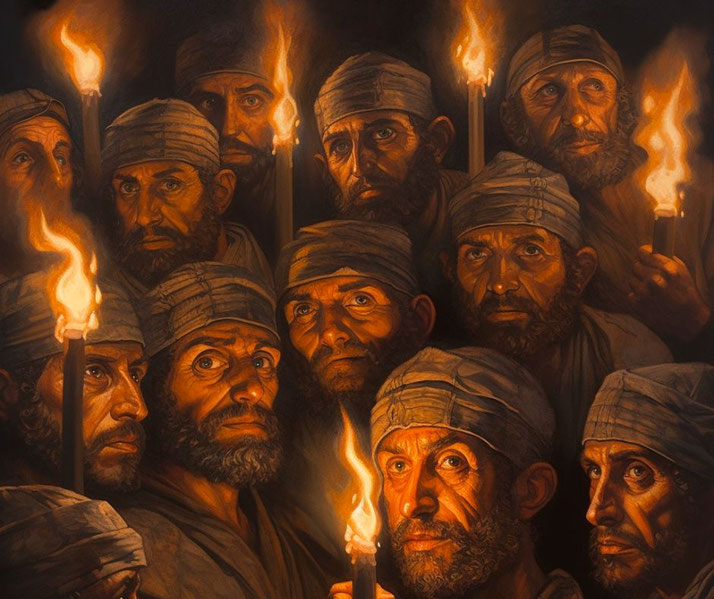Siege of Masada: the dramatic last stand of the Jewish rebels against the Romans

In the arid expanse of the Judean Desert, perched high upon a plateau, lies the ancient fortress of Masada. This rugged bastion, surrounded by sheer cliffs and desolate beauty, is more than just a testament to architectural prowess; it is a symbol of indomitable spirit, a monument to the last stand of Jewish rebels against the might of the Roman Empire.
Over two thousand years ago, the Siege of Masada unfolded here, a dramatic climax to the Great Jewish Revolt, a tale of resistance and sacrifice that continues to resonate in the annals of history.
But what led to this desperate standoff?
And how did a small band of rebels hold out against the Roman legions?
Roman control of Judaea
In the first century CE, the Roman Empire was at the height of its power, with territories spanning from the British Isles to the Middle East.
The Roman province of Judea, located in the eastern Mediterranean, was a strategically important region due to its location at the crossroads of several key trade routes.
However, it was also a region of tension and conflict. The Jewish population, with its distinct religious and cultural traditions, often found itself at odds with the Roman authorities and their attempts to impose Roman culture and governance.
The Roman rule in Judea was marked by heavy taxation, religious tensions, and political unrest.
The Jews, fiercely protective of their religious traditions, were often in conflict with the Romans over issues of religious freedom.
This tension was exacerbated by the Roman practice of appointing local leaders, known as procurators, who were often corrupt and insensitive to Jewish customs and laws.

The relationship between the Jewish population and the Roman Empire was fraught with tension long before the Siege of Masada.
The Jews' monotheistic faith and refusal to worship the Roman Emperor as a god was a constant source of conflict.
The imposition of Roman laws and taxes, coupled with the desecration of Jewish religious symbols, led to growing resentment among the Jewish population.
Outbreak of the Great Jewish Revolt
The Great Jewish Revolt, also known as the First Jewish-Roman War, was a significant uprising against the Roman Empire that began in 66 CE.
The revolt was fueled by a combination of religious and socio-economic factors. The Jewish population was deeply dissatisfied with Roman rule, which they saw as oppressive and disrespectful to their religious beliefs and practices.
This dissatisfaction was further exacerbated by economic hardship caused by heavy Roman taxation.
The revolt began in Caesarea, where a dispute over religious rights between Jews and Greeks escalated into violence.
The rebellion quickly spread throughout Judea, with Jewish rebels seizing control of Jerusalem and expelling the Roman garrison.
The Romans, underestimating the strength of the rebellion, suffered a significant defeat when they attempted to quell the revolt without sufficient forces.
Masada played a crucial role in the Great Jewish Revolt. The fortress, originally built by King Herod the Great as a refuge for himself, was seized by the Sicarii, a group of Jewish zealots, in the early stages of the revolt.
From this nearly impregnable fortress, the Sicarii conducted raids and attacks on Roman forces and local Jewish communities who they deemed as collaborating with the Romans.
After the fall of Jerusalem in 70 CE, Masada remained the last stronghold of Jewish resistance against the Romans.
The Sicarii, under the leadership of Eleazar ben Ya'ir, continued to hold out against the Romans, refusing to surrender.
Geographic and Strategic Importance of Masada
Masada, a fortress of immense strategic importance, is located in the Judean Desert, overlooking the Dead Sea.
Its position on a large, isolated rock plateau made it a natural fortress, nearly impregnable to attack.
The only approach to the fortress was a narrow, winding path known as the "Snake Path," which was easily defensible.
The fortress's location also offered a commanding view of the surrounding area, allowing its occupants to spot approaching enemies from a great distance.
The fortress was also self-sufficient, with large storehouses filled with food and other supplies, and an ingenious water collection system that captured rainwater and directed it into large cisterns.
This allowed the fortress to withstand prolonged sieges, a feature that would prove crucial during the Siege of Masada.

Defensive Capabilities of the Fortress
Masada was a marvel of engineering and architecture. Built by King Herod the Great, it was designed not only as a military fortress but also as a luxurious palace.
The fortress was divided into a northern palace, used by Herod, and a western palace for his guests.
The northern palace, built on three rock terraces, was a testament to Herod's opulence, with beautiful mosaics, frescoes, and a Roman-style bathhouse.
The fortress's defenses were equally impressive. The casemate wall, a double wall with rooms in between for storage and living quarters, surrounded the plateau.
Numerous towers provided lookout points, and the main gate was heavily fortified. The fortress also housed large storehouses, barracks, and an armory, making it a self-contained city that could withstand a prolonged siege.
The Siege Begins
The Siege of Masada began in the late 72 CE or early 73 CE, led by the Roman governor of Judaea, Lucius Flavius Silva. Silva commanded the Roman legion X Fretensis, along with auxiliary forces, totaling around 15,000 soldiers.
The Romans set up camps and circumvallation walls around the base of Masada to prevent any escape or outside assistance.
Understanding the difficulty of a direct assault due to Masada's formidable defenses, Silva decided on a siege strategy.
The Romans were masters of siege warfare and had a variety of tools and tactics at their disposal. They knew that time was on their side.
With their superior numbers and resources, they could afford to wait while the defenders' supplies gradually ran out.
However, Silva also ordered the construction of a massive siege ramp on the western side of the fortress, a feat that took several months.
This ramp would allow the Romans to roll up a siege tower and battering ram to breach the fortress walls.
Thousands of Jewish prisoners were used to build the ramp, a tactic to dissuade the Sicarii from attacking the workers, as they would be killing fellow Jews.

Conditions inside the siege
Life during the siege was a test of endurance for the defenders. The Sicarii, numbering around 960 men, women, and children, had to ration their food and water supplies carefully.
Despite the harsh conditions, they continued to resist, refusing to surrender to the Romans.
They lived in the casemate rooms within the fortress walls, and archaeological evidence suggests they also conducted workshops for pottery, cloth weaving, and food production.
The defenders also drew strength from their faith. The discovery of several ritual baths and fragments of biblical scrolls suggests that religious practices continued during the siege.
Despite the grim circumstances, the defenders of Masada held on, their resilience a testament to their determination to remain free.
The tragic end of the siege
As the Roman siege ramp neared completion, the defenders of Masada faced a grim reality.
They knew that once the Romans breached the walls, they would be either killed or enslaved.
According to the historian Josephus, who provides the only written account of the siege, Eleazar ben Ya'ir, the leader of the Sicarii, gave two impassioned speeches to his followers.
He argued that it was better for them to die free than live as Roman slaves, and proposed a collective suicide.
Josephus recounts that the defenders agreed to this proposal. They decided to burn their belongings to deny the Romans any spoils, except for the food stores, which were left untouched to show that they had not died of starvation but of their own free will.
They then drew lots to choose ten men who would kill the rest. These ten then drew lots again to choose one man who would kill the remaining nine and then himself.
In this way, they ensured that no one would have to kill a family member or friend, and no one would have to commit suicide, which was forbidden by Jewish law.

Roman dominance once more
With the fall of Masada, the Great Jewish Revolt effectively came to an end. The Roman Empire reasserted its control over Judea, which became a part of the province of Syria.
The Romans continued to rule the region until the rise of the Byzantine Empire in the 4th century CE.
The Jewish population in Judea was significantly reduced, with many Jews killed, enslaved, or choosing to leave the region.
The fall of Masada marked the end of a significant chapter in Jewish history, but it was far from the end of Jewish resistance against foreign rule.
The Story of Masada in Jewish Tradition and Identity
The story of Masada was largely forgotten until it was rediscovered in the modern era.
The tale of a small group of Jewish rebels making a final stand against the mighty Roman Empire resonated deeply with the Jewish people, particularly in the context of the Zionist movement and the establishment of the state of Israel.
Masada became a symbol of Jewish resistance and the determination to "never again" allow such a tragedy to occur.
Today, the story of Masada is an integral part of Israeli national identity. The phrase "Masada shall not fall again" has become a rallying cry, and the site is often a destination for school trips and military ceremonies.
The Israeli army, for example, used to hold swearing-in ceremonies for soldiers at the top of the fortress, symbolizing their commitment to defend the state of Israel.
The legacy of Masada, therefore, extends far beyond the historical event itself. It is a testament to the resilience and determination of the Jewish people, a symbol of resistance that continues to inspire to this day.
What do you need help with?
Download ready-to-use digital learning resources
Copyright © History Skills 2014-2025.
Contact via email
With the exception of links to external sites, some historical sources and extracts from specific publications, all content on this website is copyrighted by History Skills. This content may not be copied, republished or redistributed without written permission from the website creator. Please use the Contact page to obtain relevant permission.





